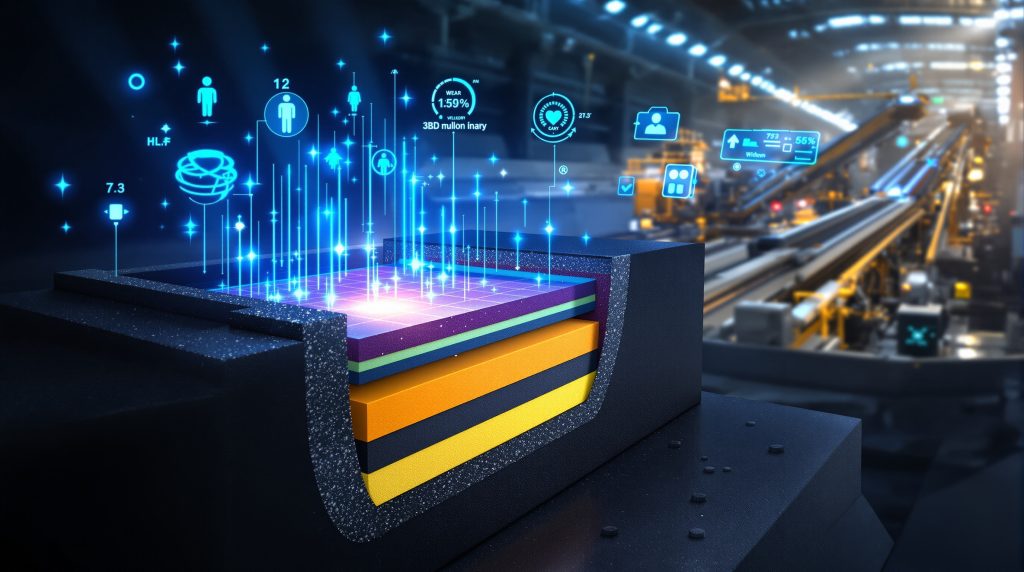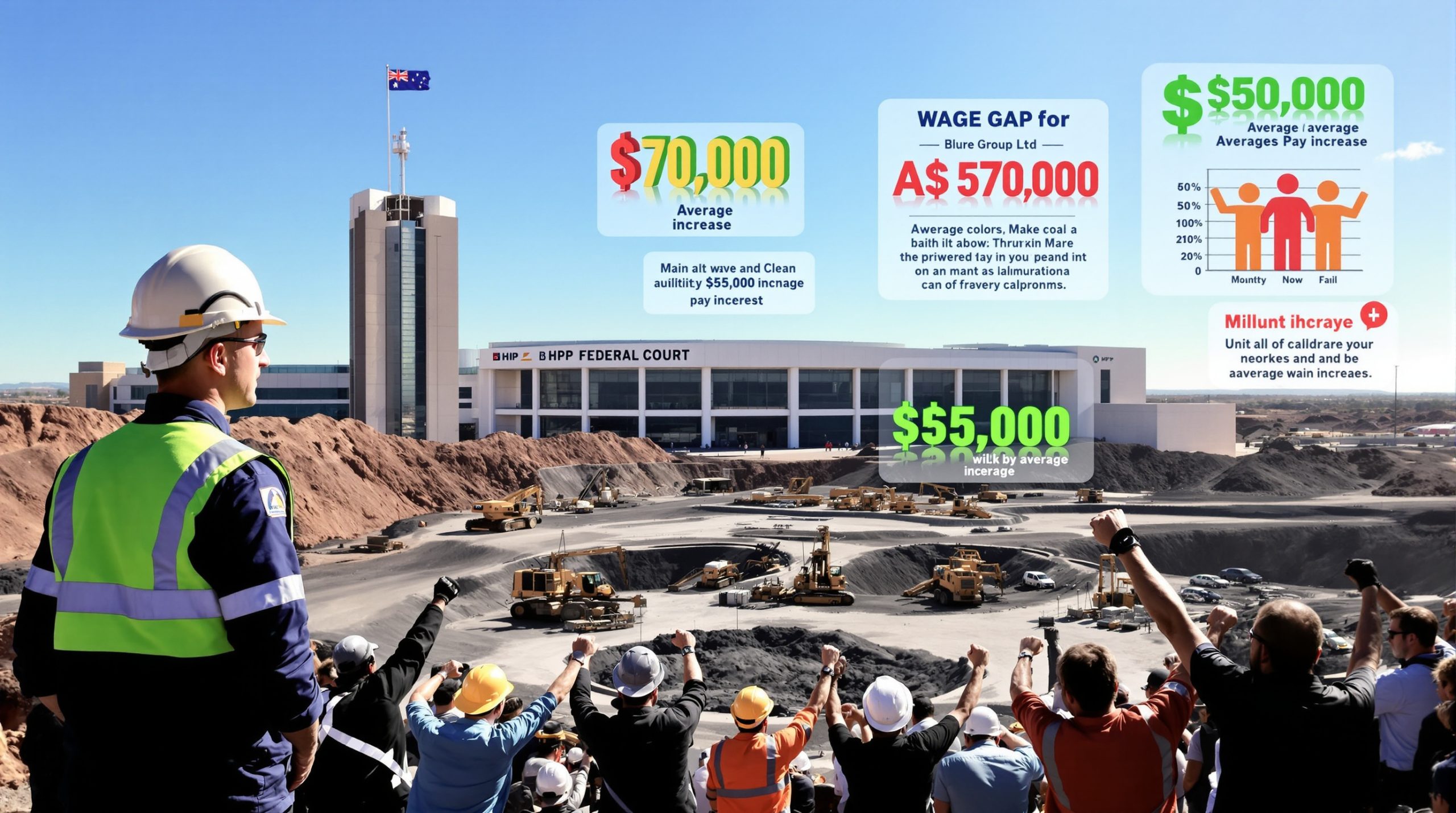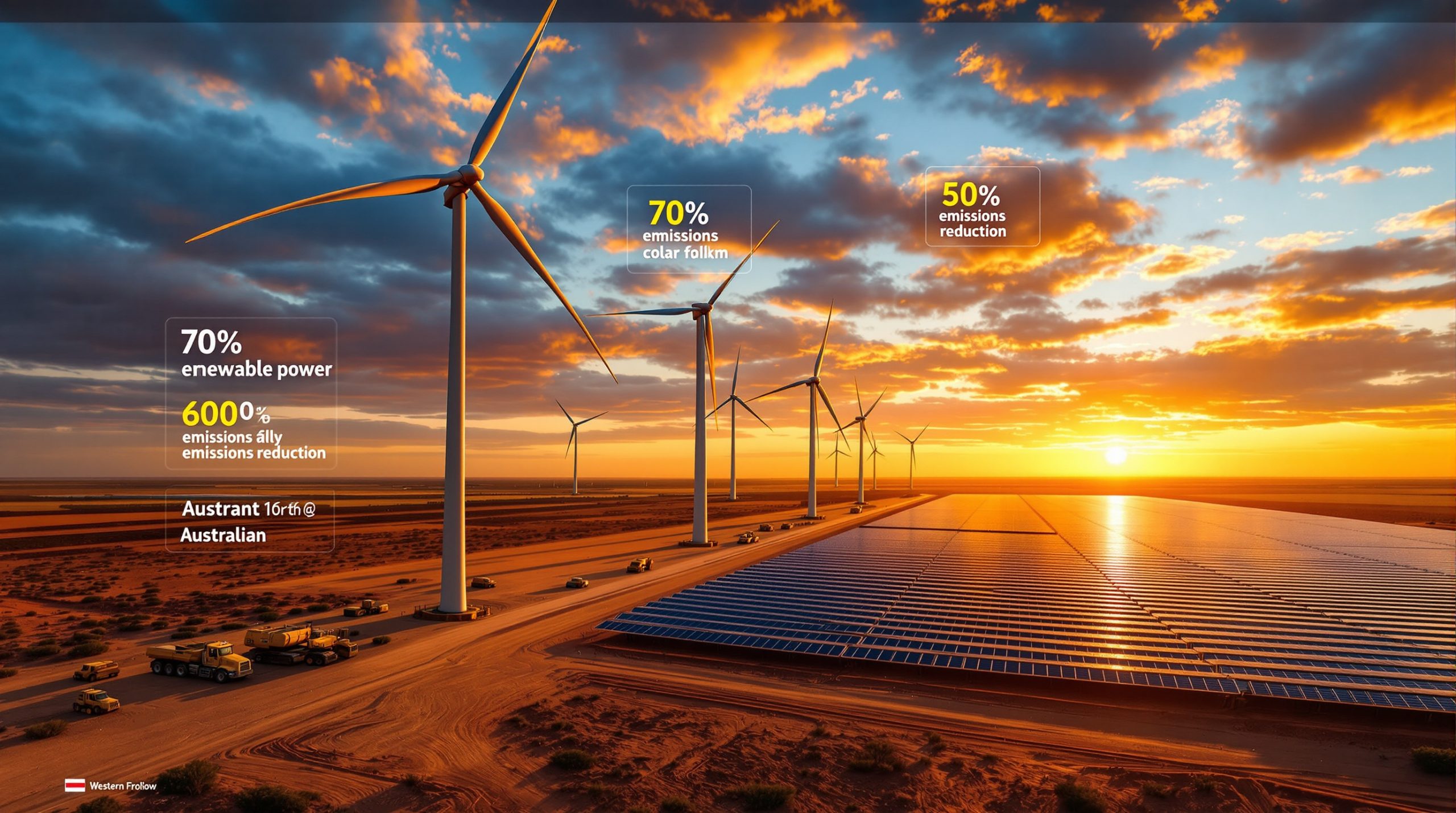What Are Smart Rubber Indicators and Why Are They Important?
Smart rubber indicators represent a technological breakthrough in wear management for mining operations. These innovative systems integrate colored layers or electronic sensors directly into rubber components, providing real-time feedback on wear conditions. Unlike traditional methods that rely on scheduled maintenance or visual inspections, smart indicators deliver proactive alerts that help prevent unexpected failures, minimize operational disruptions, and enhance safety across mining sites.
The significance of these indicators stems from the extreme operating conditions in mining environments, where abrasive materials constantly degrade equipment components. According to industry experts, effective wear management requires engineering solutions that address real-world operating conditions rather than simply selecting the hardest materials available.
By providing timely information about component degradation, operations teams can optimize maintenance schedules, extend component lifespans, and substantially reduce the total cost of ownership for critical mining equipment. The implementation of data-driven mining operations continues to transform the industry's approach to equipment maintenance.
How Do Visual Wear Indicator Systems Work?
Color-Coded Layer Technology
Visual wear indicators employ an ingenious multi-layer approach to monitoring component degradation. The system typically consists of:
- A primary wear surface composed of abrasion-resistant rubber compounds
- Multiple distinctly colored underlayers that become visible as wear progresses
- Strategically placed indicators in high-wear zones for maximum visibility and early detection
When the outer layer erodes to a predetermined threshold, the colored underlayer becomes visible, providing an immediate visual cue that maintenance attention is required. This simple yet effective color-change mechanism requires no power sources, complex sensors, or monitoring equipment, making it particularly well-suited for remote mining locations with limited infrastructure.
Strategic Implementation in Mining Components
Visual indicators are commonly integrated into various mining components including:
- Rubber linings for material transfer chutes and hoppers
- Impact zones at transfer points where material direction changes
- Discharge areas in crushing and screening equipment
- Mill liners and discharge components subject to continuous abrasion
The strategic placement of these indicators focuses on critical wear points where component failures would cause significant operational disruptions. By positioning indicators at varying depths within the rubber, maintenance teams receive progressive warnings about wear status rather than binary (functional/failed) information, allowing for more nuanced modern mine planning.
What Advanced Sensor-Based Smart Rubber Systems Are Available?
Embedded Sensor Technology
Beyond visual indicators, advanced smart rubber systems incorporate electronic sensors directly embedded within rubber components. These sophisticated sensors can monitor:
- Real-time wear rates and patterns across component surfaces
- Temperature fluctuations that may indicate abnormal operating conditions
- Impact forces and pressure distribution throughout the system
- Vibration characteristics that might signal impending component failure
The data collected from these sensors is transmitted to centralized monitoring systems, enabling comprehensive analysis of wear conditions across multiple components simultaneously. This level of monitoring allows operations to transition from reactive to predictive maintenance approaches, a key aspect of AI in mining operations.
Integration with Maintenance Management Systems
Modern sensor-based smart rubber indicators connect seamlessly with:
- Plant maintenance dashboards for centralized condition monitoring
- Predictive maintenance algorithms that forecast replacement needs
- Automated work order generation systems that streamline maintenance planning
- Historical performance databases that support continuous improvement initiatives
This integration transforms traditional reactive maintenance practices into data-driven predictive approaches, allowing operations to schedule component replacements during planned shutdowns rather than responding to emergency failures. The sensor output integration enhances predictability and asset visibility while providing valuable data for maintenance planning.
How Are Smart Rubber Indicators Transforming Mining Operations?
Improved Safety Through Predictability
Smart indicators significantly enhance operational safety by:
- Reducing the need for manual inspections in hazardous or confined areas
- Preventing catastrophic failures that could endanger personnel
- Minimizing emergency maintenance activities in dangerous conditions
- Providing remote monitoring capabilities for inaccessible locations
These safety improvements align with the mining industry's increasing focus on reducing workplace incidents and creating safer operating environments. The ability to monitor component condition remotely is particularly valuable in hazardous or inaccessible zones within processing plants.
Economic Benefits and ROI
The implementation of smart rubber indicators delivers measurable economic benefits:
| Benefit Category | Typical Impact |
|---|---|
| Reduced Downtime | 15-30% decrease in unplanned stoppages |
| Extended Component Life | 10-25% longer service intervals through optimal timing |
| Maintenance Labor | 20-40% reduction in inspection hours |
| Inventory Optimization | More precise forecasting of replacement needs |
| Energy Efficiency | Properly maintained components require less power |
These economic advantages typically deliver return on investment within 6-12 months of implementation, particularly in high-throughput operations where downtime is extremely costly. The predictability and repeatability in maintenance scheduling contribute significantly to these financial benefits.
What Are the Key Applications of Smart Rubber Indicators in Mining?
Mill Liner Systems with Integrated Monitoring
Mill liners represent one of the most critical applications for smart rubber indicators. Modern mill solutions include:
- Rubber-based liners with embedded wear indicators for shell, head, and discharge zones
- Synthetic and natural rubber blends optimized for specific ore characteristics
- Strategic placement of indicators at critical wear points
- Integration with mill performance monitoring systems
These smart mill liners reduce impact stress on mill shells while maintaining efficient charge motion, with the added benefit of providing clear signals when replacement is needed. They are specifically engineered for use in SAG (semi-autogenous grinding) and ball mills where consistent performance is essential.
Material Transfer Points and Chute Systems
Material transfer represents another high-wear application where smart indicators deliver significant value:
- Engineered chutes with rubber wear panels featuring built-in indicators
- Strategic placement at impact zones and directional change points
- Customized indicator configurations based on material characteristics
- Integration with transfer point optimization systems
These systems are particularly valuable in ROM (run-of-mine) bins and discharge chutes where irregular ore feed and abrasive fines cause uneven wear patterns. The engineered chutes are designed with hoods and spoons to regulate material flow while the smart indicators monitor wear conditions.
Slurry Transport Components
Slurry handling presents unique wear challenges that benefit from smart indicator technology:
- Heavy-duty rubber hoses with embedded wear monitoring
- Ceramic-embedded rubber components with integrated indicators
- Strategic placement at bends and high-velocity zones
- Monitoring systems for critical pump components
These applications are common in concentrators, tailings systems, and underflow lines where abrasive slurries cause accelerated wear. The heavy-duty rubber hoses are engineered to withstand high internal pressures and abrasive flow conditions while providing reliable wear monitoring.
How Do Smart Rubber Indicators Compare to Traditional Wear Monitoring?
Advantages Over Conventional Methods
Smart rubber indicators offer several significant advantages compared to traditional wear monitoring approaches:
| Traditional Method | Smart Indicator Advantage |
|---|---|
| Manual thickness measurements | No shutdown required for inspection |
| Scheduled replacements based on time | Data-driven replacements based on actual condition |
| Visual inspections requiring confined space entry | Remote monitoring without personnel exposure |
| Reactive replacement after failure | Proactive replacement before critical failure |
| Limited data on wear patterns | Comprehensive wear data for continuous improvement |
These advantages translate into safer operations, reduced maintenance costs, and improved equipment reliability. The elimination of shutdown maintenance requirements represents a particularly valuable benefit for continuous processing operations.
Limitations and Considerations
Despite their benefits, smart rubber indicators have certain limitations that should be considered:
- Initial cost may be higher than conventional rubber components
- Installation requires careful planning and strategic placement
- Some systems require power and connectivity infrastructure
- Data interpretation may require specialized expertise
- Not all applications benefit equally from smart indicator technology
Mining operations must evaluate these factors when determining the optimal implementation strategy for their specific conditions and operational requirements.
What Future Developments Are Expected in Smart Rubber Indicator Technology?
Integration with Digital Twin Technology
The future of smart rubber indicators includes integration with digital twin technology, creating virtual representations of physical components that:
- Simulate wear patterns under various operating conditions
- Predict optimal replacement timing based on production schedules
- Test different material compositions virtually before physical implementation
- Optimize placement of indicators based on historical wear data
This integration will enable more sophisticated predictive maintenance strategies and component optimization, supporting the industry's shift toward smarter, more sustainable mining operations through advanced mining innovation trends.
Advanced Materials and Sensing Capabilities
Research continues in developing:
- Self-healing rubber compounds that extend component life
- Nano-sensor technology for more precise wear monitoring
- Wireless power harvesting to eliminate battery requirements
- AI-driven analysis of wear patterns to identify root causes
These advancements will further enhance the capabilities and applications of smart rubber indicators in mining operations, aligning with environment, social and governance (ESG) goals while extending asset life and reducing environmental impact through more efficient resource utilization.
How to Implement Smart Rubber Indicators in Mining Operations?
Assessment and Planning
Successful implementation begins with thorough assessment:
- Identify critical wear points through operational analysis
- Evaluate current maintenance practices and failure modes
- Determine appropriate indicator types for each application
- Establish baseline metrics for post-implementation comparison
- Develop implementation priorities based on potential impact
This assessment ensures that smart indicators are deployed where they will deliver maximum value. Many providers conduct site audits before proposing materials, mapping flow conditions, creating liner wear profiles, and providing feedback from past shutdowns.
Integration with Existing Maintenance Practices
Implementation should complement existing maintenance systems:
- Train maintenance personnel on indicator interpretation
- Update inspection procedures to include indicator monitoring
- Integrate indicator data with maintenance management software
- Establish response protocols for different wear alert levels
- Develop documentation for consistent implementation
Proper integration ensures that the benefits of smart indicators are fully realized through appropriate operational responses. The focus should be on creating a comprehensive wear management strategy rather than simply replacing components.
FAQ: Common Questions About Smart Rubber Indicators
How do smart rubber indicators improve worker safety?
Smart rubber indicators enhance safety by reducing the need for manual inspections in hazardous areas, preventing catastrophic failures, and enabling remote monitoring of wear conditions. This minimizes worker exposure to dangerous environments and unexpected equipment failures while providing reliable data for maintenance planning.
What is the typical return on investment for smart rubber indicator systems?
Most mining operations report ROI within 6-12 months of implementation, primarily through reduced downtime, extended component life, and decreased emergency maintenance costs. High-throughput operations typically see faster returns due to the higher cost of unplanned stoppages and the significant value of continuous production.
Can smart rubber indicators be retrofitted to existing equipment?
Yes, many smart rubber indicator systems are designed for retrofit applications. Visual indicator systems are particularly suitable for retrofitting as they require no additional infrastructure. Sensor-based systems may require more extensive modifications depending on connectivity requirements and integration with existing monitoring systems.
How do environmental conditions affect smart rubber indicator performance?
Temperature extremes, chemical exposure, and high-impact environments can affect indicator performance. Modern systems are designed with these factors in mind, but site-specific conditions should be considered during selection and implementation to ensure reliable operation. Material selection must account for the specific abrasive properties of the ore being processed.
The Future of Wear Management in Mining
Smart rubber indicators represent a significant advancement in mining wear management, transforming traditional reactive maintenance into data-driven predictive approaches. By providing clear, timely information about component condition, these systems improve safety, reduce costs, and enhance operational reliability.
As mining operations continue to focus on efficiency and sustainability, smart wear management technologies will play an increasingly important role in optimizing asset performance and reducing environmental impact through more efficient resource utilization.
The evolution from simple visual indicators to sophisticated sensor technology in mining demonstrates the mining industry's commitment to technological innovation in addressing operational challenges. Materials like specialized rubber compounds not only wear well but also dampen sound, reduce vibration fatigue, and in many cases, lower carbon emissions compared to energy-intensive ceramic processing.
As these technologies continue to develop, their integration with broader digital transformation initiatives will further enhance their value and application across the mining value chain, supporting the industry's shift toward smarter, more sustainable operations.
Interested in the Next Mineral Discovery Breakthrough?
Stay ahead of the market with Discovery Alert's proprietary Discovery IQ model, delivering instant notifications on significant ASX mineral discoveries and transforming complex data into actionable investment insights. Explore historic discoveries and their substantial returns by visiting the Discovery Alert discoveries page and begin your 30-day free trial today.




